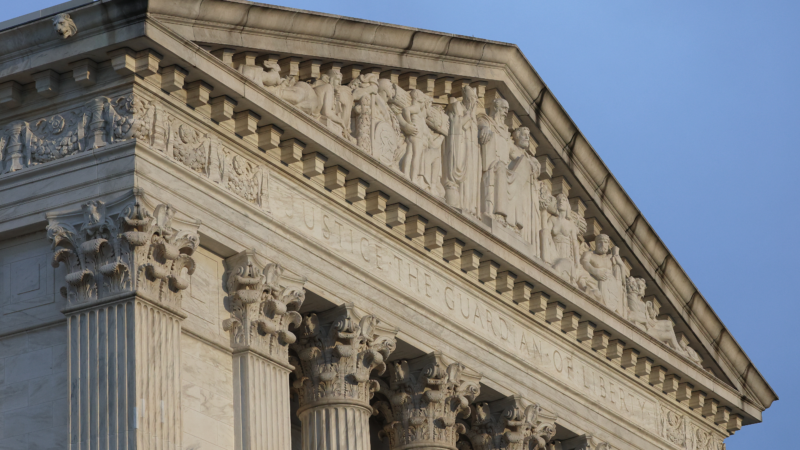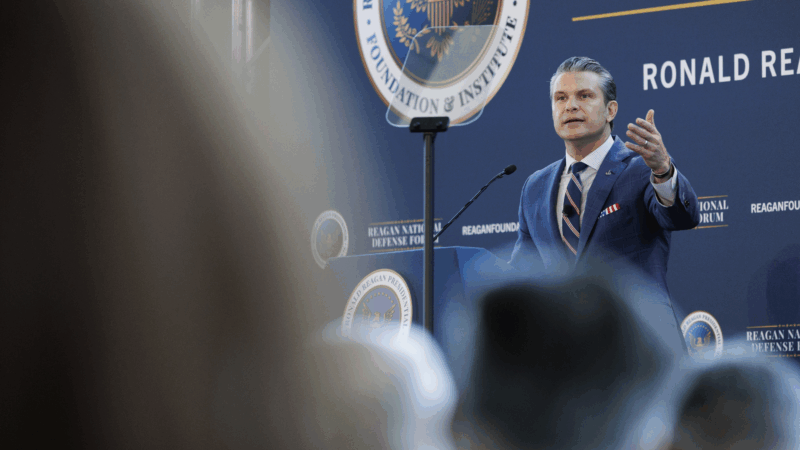Supreme Court lets Trump move forward with firing thousands of federal workers
The U.S. Supreme Court on Tuesday allowed the Trump administration’s firing of 16,000 probationary federal employees to go forward, at least for now.
In an unsigned opinion and without addressing the question of whether the terminations themselves were lawful, the court said the nonprofits that brought the case did not have legal standing to sue over federal employees’ firings.
The vote was 7 to 2. Justices Sonia Sotomayor and Ketanji Brown Jackson would have kept the firings paused while the case plays out in the lower courts, according to the order.
The court’s narrow ruling applies only to the nonprofits in Tuesday’s lawsuit, and it did not decide on the case as a whole. Nonetheless, the court’s decision makes it more difficult for groups affected by government layoffs to challenge mass firings systematically.
In that sense, the court’s action is a victory for the Trump administration and its effort to dramatically shrink federal agencies and programs, concentrating executive power in the White House.
Probationary employees dismissed
Following an executive order signed by President Trump on February 11, the Office of Personnel Management told agencies to terminate all but essential probationary employees. Probationary employees are typically recent agency hires or tenured employees serving in new roles.
Various agencies promptly began firing employees, ultimately totaling tens of thousands. Federal workers’ unions and a group of nonprofit organizations sued the Office of Personnel Management and several agencies, including the Departments of Veterans Affairs, Agriculture, Defense, Energy, Interior and Treasury, to halt the firings.
Those challenging the dismissals argued that OPM didn’t have the authority to order firings. They also argued the federal government did not follow the proper procedures for firing probationary federal workers, including providing adequate notice to the terminated employees and the affected state and local governments.
Judge William Haskell Alsup, a district court judge in San Francisco appointed by former President Bill Clinton, initially ruled that while the unions had no legal standing to bring the case, the nonprofits did have standing because they depend on government services and say they’re negatively affected by the government’s reduced capacity.
After a brief hearing last month, Alsup reinstated federal employees at six departments — the Departments of Agriculture, Defense, Energy, Interior, Treasury and Veterans Affairs.
Alsup said that the Office of Personnel Management, which helps set the government’s human resources policies, could not direct agencies to conduct mass firings. Rather, only the departments themselves can make those decisions.
The government countered that OPM did not direct agencies to do anything, and that the terminations were otherwise lawful. It took that argument to the court of appeals, which refused to intervene immediately.
So the Trump administration kicked the case up to the Supreme Court, asking the justices to come to the rescue.
In its Supreme Court briefs, the government contended that the dispute over the terminations was, like all employment disputes, exclusively between the federal government and its employees. The government insisted the nonprofits didn’t have standing to bring this case on behalf of the employees because the employees themselves needed go through the proper, yet limited, channels to challenge their firings, with each employee fighting his or her own battle.
A majority of the court seemed to side with the Trump administration on that point, ruling that the nonprofits should not have been allowed to continue bringing their case.
That being said, the Supreme Court’s stay, which allows the administration to execute the firings for now while it litigates in federal court, does not mean the actual terminations were lawful. The High Court did not address those questions Tuesday, and left the door open for other parties, with better standing arguments, to bring a case in the future.
Indeed, still playing out in the lower courts is a similar challenge in Maryland, where 19 states and the District of Columbia sued to reinstate employees at more than 20 different agencies, and so far have partially prevailed.
The states suing in Maryland may have a better case than the nonprofits affected by Tuesday’s decision, because the states could have a stronger argument as to their legal standing.
Light from satellites will ruin majority of some space telescope images, study says
Astronomers have long been concerned about reflections from satellites showing up in images taken by telescopes and other scientific instruments.
Defense Department is reviewing boat strike video for possible release, Hegseth says
In a speech on Saturday, Defense Secretary Pete Hegseth defended the strikes, saying: "President Trump can and will take decisive military action as he sees fit to defend our nation's interests."
Bama, Miami in, Notre Dame out and Indiana No. 1 in College Football Playoff rankings
Nobody paying attention for the past 24 months would be surprised to see Indiana – yes, Indiana – leading the way into this year's College Football Playoff.
McLaren’s Lando Norris wins first F1 title at season-ending Abu Dhabi Grand Prix
Red Bull driver and defending champion Max Verstappen won the race with Norris placing third, which allowed Norris to finish two points ahead of Verstappen in the season-long standings.
A ban on feeding pigeons ruffles lots of feathers in Mumbai
The pigeon population has exploded — a result of people feeding the birds. For some it's a holy duty and a way to connect to nature. Critics point to health risks tied to exposure to pigeon droppings.
UN humanitarian chief: world needs to ‘wake up’ and help stop violence in Sudan
The UN's top humanitarian and emergency relief official has told NPR that the lack of attention from world leaders to the war in Sudan is the "billion dollar question".








